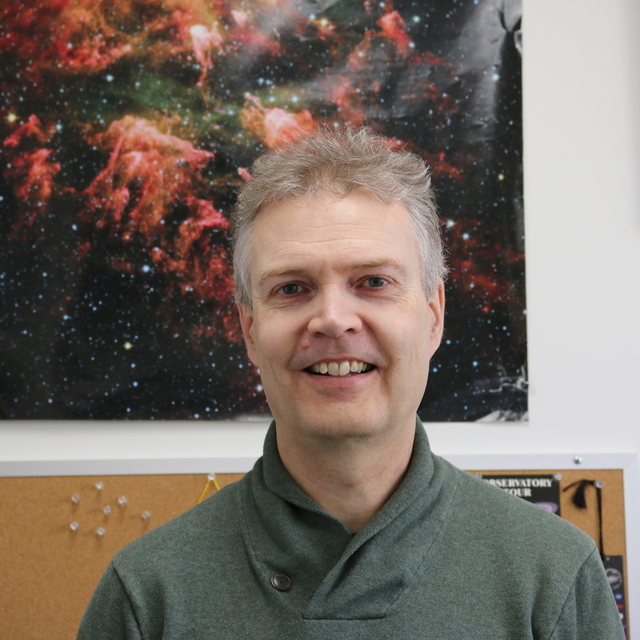November
2022
•
2022MNRAS.517..858J
Authors
•
Janssens, Steven R.
•
Romanowsky, Aaron J.
•
Abraham, Roberto
•
Brodie, Jean P.
•
Couch, Warrick J.
•
Forbes, Duncan A.
•
Laine, Seppo
•
Martínez-Delgado, David
•
van Dokkum, Pieter G.
Abstract
•
We investigate the isolated, quiescent ultra-diffuse galaxy (UDG) DGSAT I and its globular cluster (GC) system using two orbits of Hubble Space Telescope Advanced Camera for Surveys imaging in the F606W and F814W filters. This is the first study of GCs around a UDG in a low-density environment. DGSAT I was previously found to host an irregular blue low surface brightness clump, which we confirm as very likely belonging to the galaxy rather than being a chance projection, and represents a recent episode of star formation (~500 Myr) that challenges some UDG formation scenarios. We select GC candidates based on colours and magnitudes, and construct a self-consistent model of the GC radial surface density profile along with the background. We find a half-number radius of RGC = 2.7 ± 0.1 kpc (more compact than the diffuse starlight) and a total of 12 ± 2 GCs. The total mass fraction in GCs is relatively high, supporting an overmassive dark matter halo as also implied by the high velocity dispersion previously measured. The GCs extend to higher luminosities than expected, and have colours that are unusually similar to their host galaxy colour, with a very narrow spread, all of which suggest an early, intense burst of cluster formation. The nature and origin of this galaxy remain puzzling, but the most likely scenario is a 'failed galaxy' that formed relatively few stars for its halo mass, and could be related to cluster UDGs whose size and quiescence pre-date their infall.
Links




